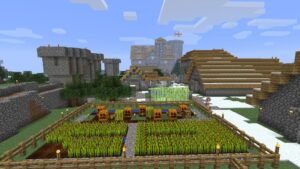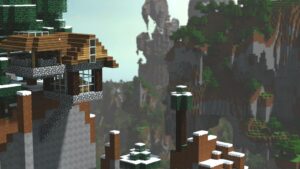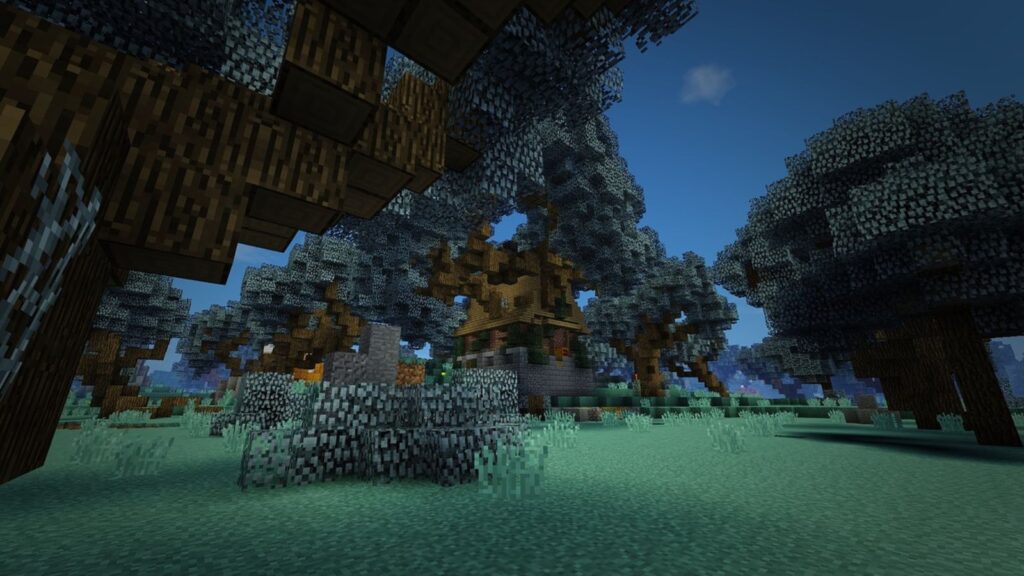In the vast universe of video games, few have captured the imagination like Minecraft. This pixelated sandbox game, launched by Mojang Studios in 2011, has become a cultural phenomenon, offering players endless possibilities to explore, build, and create. Its simplistic graphics belie the depth of creativity it unleashes, allowing players to construct intricate worlds limited only by their imagination. Much like digital nomads, who navigate the world with a laptop and a flexible mindset, Minecraft reflects a boundless freedom to shape and explore virtual landscapes, empowering users to build without borders, wherever they are.
Cool:F1v01jfuwxq= Minecraft
 Minecraft, developed by Mojang Studios, offers a sandbox environment where players manipulate blocks to create structures and landscapes. Its core mechanics revolve around resource gathering, crafting, and exploration. Players start with nothing and accumulate resources to shape their world, tapping into creativity and strategy. In today’s gaming experience, a reliable home internet connection is essential, allowing players to seamlessly connect with others in multiplayer modes, download updates, and explore vast online worlds. As Minecraft’s creativity thrives in a connected space, solid home internet ensures players can fully immerse themselves in the game’s limitless potential.
Minecraft, developed by Mojang Studios, offers a sandbox environment where players manipulate blocks to create structures and landscapes. Its core mechanics revolve around resource gathering, crafting, and exploration. Players start with nothing and accumulate resources to shape their world, tapping into creativity and strategy. In today’s gaming experience, a reliable home internet connection is essential, allowing players to seamlessly connect with others in multiplayer modes, download updates, and explore vast online worlds. As Minecraft’s creativity thrives in a connected space, solid home internet ensures players can fully immerse themselves in the game’s limitless potential.
Modes in the game include Survival, Creative, and Adventure. In Survival mode, players must manage health and hunger while building shelters and defeating enemies. Creative mode provides unlimited resources for constructing vast projects without restrictions. Adventure mode allows for gameplay that involves custom maps with specific challenges.
The game’s blocky aesthetic features elements such as crafting tables, enchantment sites, and Redstone circuits, which parallel real-world systems and inspire educational use. This design fosters an environment where experimentation leads to learning, influencing a generation.
Minecraft also supports multiplayer options through servers, enabling collaborative projects and social interaction. Servers host various mini-games and themed worlds where communities thrive. This connectivity amplifies its appeal, drawing millions of users to join and create in shared digital spaces.
Graphics And Aesthetics
 Minecraft’s graphics blend simplicity with charm, featuring a distinctly pixelated design that evokes nostalgia. Despite its basic visual style, the game captures players’ imaginations by offering an expansive visual canvas. Each block, from lush green grass to glowing Redstone, contributes to the unique blocky aesthetic that defines the game.
Minecraft’s graphics blend simplicity with charm, featuring a distinctly pixelated design that evokes nostalgia. Despite its basic visual style, the game captures players’ imaginations by offering an expansive visual canvas. Each block, from lush green grass to glowing Redstone, contributes to the unique blocky aesthetic that defines the game.
Colors play a crucial role in distinguishing different biomes. For example, deserts appear sandy and barren, while lush forests brim with vibrant greens. This visual diversity ensures that each environment offers its own distinct feel, enhancing exploration.
Lighting effects further enrich the gaming experience. Blocks like torches and glowstone create dynamic lighting, influencing both aesthetics and gameplay. These light sources provide visual warmth to structures and caves, adding depth to the blocky world.
The soundtrack complements visuals, with ambient motifs enhancing mood and atmosphere. Calming day tunes contrast with eerie nighttime themes, aligning with the game’s visual cues. This synergy between graphics and audio creates an immersive experience, encouraging players to delve deeper into Minecraft’s world.
Educational Benefits
 Minecraft offers various educational benefits by integrating learning aspects into its gameplay. Its block-based environment encourages critical thinking and problem-solving as players navigate challenges and construct solutions. In Survival Mode, for instance, players plan and manage resources, fostering strategic thinking and decision-making.
Minecraft offers various educational benefits by integrating learning aspects into its gameplay. Its block-based environment encourages critical thinking and problem-solving as players navigate challenges and construct solutions. In Survival Mode, for instance, players plan and manage resources, fostering strategic thinking and decision-making.
The game’s flexibility makes it an effective tool for teaching STEM (Science, Technology, Engineering, and Mathematics) concepts. Redstone circuits mimic electrical engineering principles, allowing players to experiment with building functional machines and systems. This practical application of real-world concepts enhances understanding and retention.
Minecraft’s integration into educational settings supports project-based learning. Teachers can design custom maps and challenges that align with curriculum goals, ensuring students remain engaged while learning key concepts. For example, a history teacher might recreate historical buildings or events for students to explore, thus reinforcing historical knowledge through immersive experiences.
Gaming Creativity
Minecraft continues to captivate players worldwide with its unique blend of creativity, exploration, and community engagement. Its enduring appeal lies in its ability to offer diverse experiences, from crafting complex structures to embarking on adventurous quests. The game’s educational potential and vibrant modding community further enhance its adaptability, ensuring it remains a staple in the gaming world.
